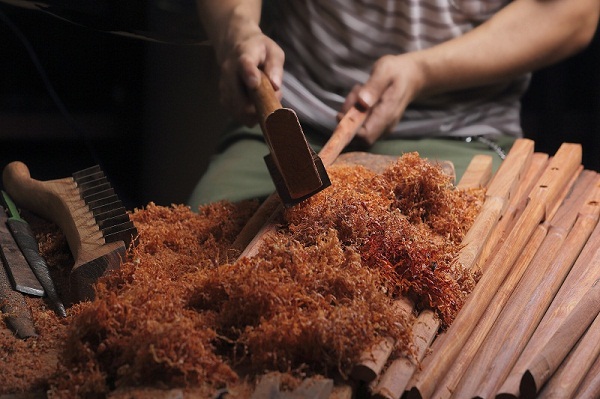Traditional musical instrument resonates cultural depth of Wuxi
The picture shows how erhu, a traditional Chinese musical instrument, is crafted. [Photo by Xu Wei/for China Daily]
Erhu is made up of a sound box, neck, peg, strings, nut and bridge. The sound box is a round, hexagonal or octagonal resonator, with the python skin covering its front end and an acoustic window on its back. The instrument's neck is slender with a bended head. Both the sound box and neck are made of hardwood such as red wood, black sandal wood, ebony and rosewood.
Two inner strings, traditionally made from twisted silk but now increasingly of metal or nylon, are attached from the pegs to the base. The nut, flexible or fixed, is placed around the neck and two strings. The lower ends of the strings are bridged with bamboo or wood at the center of the snakeskin. The bow is made of a slender bamboo stick and horse hair, which runs against the strings, vibrating them. The vibrations are transmitted to the snakeskin via the bridge, resonating in the sound box to produce the instrument's characteristic sound.
"Although sacrificing pythons for the erhu is not encouraged in many places, especially in European countries, we will not completely discard the traditional process because the techniques have been passed from generation to generation," Huang said. Almost every part of an erhu is made by hand. The wood, imported from African and Southeast Asian countries, takes at least two years to fully dry. Usually it takes at least two to three months to assemble an erhu, according to Huang.
His workshop has produced instruments for more than 10 countries and regions, including South Korea, Japan, Australia and some European countries. Huang said the erhu workshops import the skins of pythons, which are farmed, from Southeast Asian countries.
After 10 years of research with technology partners, Huang started applying artificial leather to the instruments for entry and mid-level players.
"The sound effect is very good. Even professional players couldn't tell which one was made using the artificial leather," Huang said.
Aside from the more simplified production technique, the artificial leather is also immune from changes to humidity and temperature, making the process much easier, he added. But python skins cannot be replaced in high-quality erhu, at least not yet, Huang said.
"We will keep on investing in the technology and hope the instrument will get more popular in overseas markets," he said.
Reflecting the time-honored traditions and skills of the artisans, erhu making in Meicun has been placed on Jiangsu's list of intangible cultural heritage protection.
Wuxi itself has, in fact, been home to more than half of the top erhu artists in China in the past century.
Wuxi native Liu Tianhua, who has led the modern, academic school of erhu artists in China, came up with masterpieces including Beautiful Night, Autumn Moon Over the Han Palace and Marching on the Bright Road.
Such works are not only popular in China, but have resonated with audiences across the world.


 WeChat
WeChat
 Weibo
Weibo